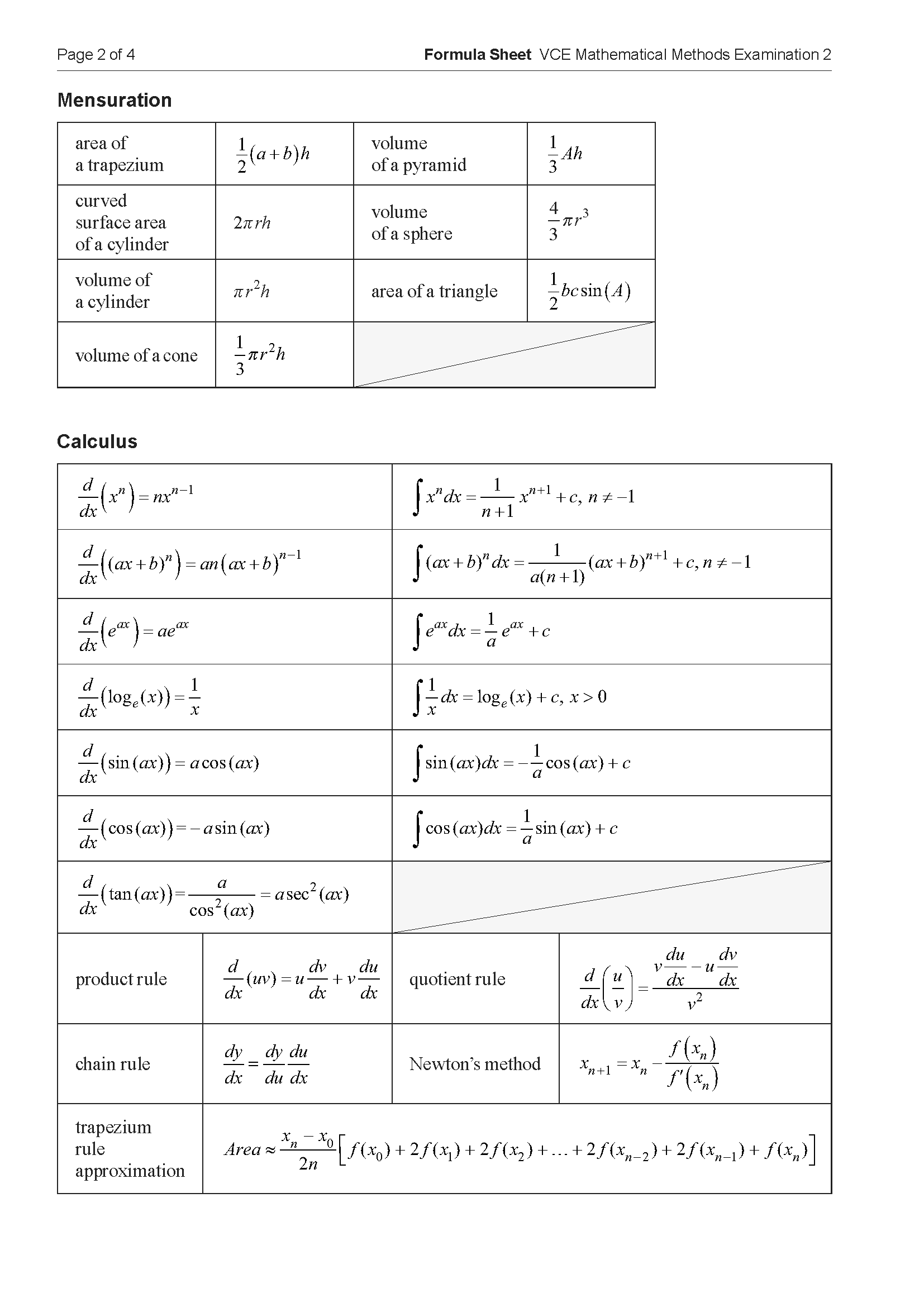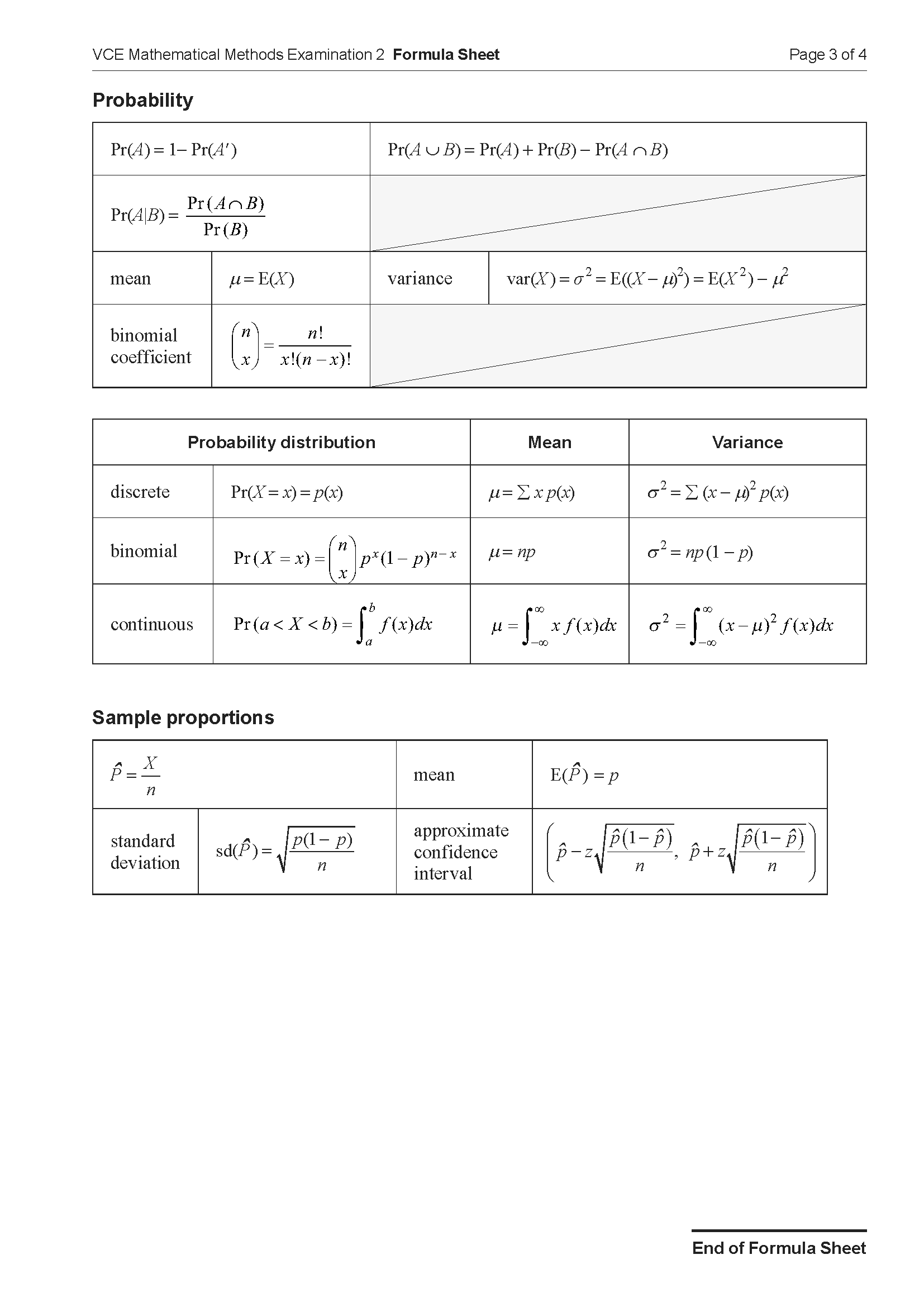VCE Maths Methods Functions Mini Test 1
Number of marks: 10
Reading time: 2 minutes
Writing time: 15 minutes
Section A – Calculator Allowed
Instructions
• Answer all questions in pencil on your Multiple-Choice Answer Sheet.
• Choose the response that is correct for the question.
• A correct answer scores 1; an incorrect answer scores 0.
• Marks will not be deducted for incorrect answers.
• No marks will be given if more than one answer is completed for any question.
• Unless otherwise indicated, the diagrams in this book are not drawn to scale.
Consider the functions \( f : (1, \infty) \to \mathbb{R}, f(x) = x^2 - 4x \) and \( g: \mathbb{R} \to \mathbb{R}, g(x) = e^{-x} \)
The range of the composite function \( g(f(x)) \) is
- A. \( (0, e^3) \)
- B. \( (0, e^3] \)
- C. \( (0, e^4) \)
- D. \( (0, e^4] \)
Consider the function \( f(x) = \frac{2x+1}{3-x} \), with domain \( x \in \mathbb{R} \setminus \{3\} \).
The inverse of \( f \) is
- A. \( f^{-1}(x) = \frac{3x - 1}{x + 2} \) with domain \( x \in \mathbb{R} \setminus \{3\} \)
- B. \( f^{-1}(x) = 3 - \frac{7}{x + 2} \) with domain \( x \in \mathbb{R} \setminus \{-2\} \)
- C. \( f^{-1}(x) = 3 + \frac{5}{x + 2} \) with domain \( x \in \mathbb{R} \setminus \{-2\} \)
- D. \( f^{-1}(x) = \frac{1 - 3x}{x + 2} \) with domain \( x \in \mathbb{R} \setminus \{-2\} \)
Some values of the functions \( f: \mathbb{R} \to \mathbb{R} \) and \( g: \mathbb{R} \to \mathbb{R} \) are shown below.
| x | 1 | 2 | 3 |
|---|---|---|---|
| f(x) | 0 | 4 | 5 |
| g(x) | 3 | 4 | -5 |
The graph of the function \( h(x) = f(x) - g(x) \) must have an x-intercept at
- A. (2, 0)
- B. (3, 0)
- C. (4, 0)
- D. (5, 0)
The graph of \( y = f(x) \) is shown below
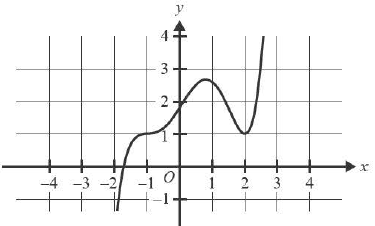
Which of the following options best represents the graph of \( y = f(2x + 1) \)?
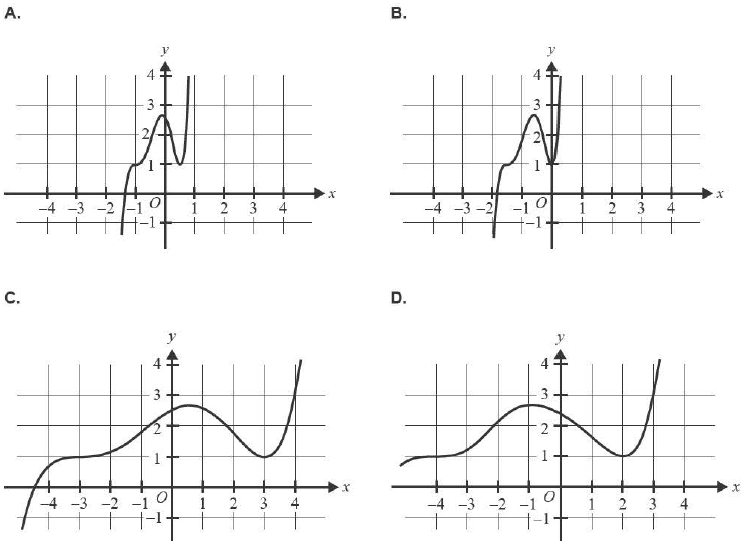
Consider the functions \( f(x) = \sqrt{x+2} \) and \( g(x) = \sqrt{1-2x} \), defined over their maximal domains.
The maximal domain of the function \(h = f + g\) is
- A. \( \left[-2, \frac{1}{2}\right) \)
- B. \( [-2, \infty) \)
- C. \( (-\infty, -2] \cup \left[\frac{1}{2}, \infty\right) \)
- D. \( \left[-2, \frac{1}{2}\right] \)
- E. [-2, 1]
End of Section A
Section B – No Calculator
Instructions
• Answer all questions in the spaces provided.
• Write your responses in English.
• In questions where a numerical answer is required, an exact value must be given unless otherwise specified.
• In questions where more than one mark is available, appropriate working must be shown.
• Unless otherwise indicated, the diagrams in this book are not drawn to scale.
The function \( h : [0, \infty) \rightarrow \mathbb{R},\ h(t) = \frac{3000}{t + 1} \) models the population of a town after \( t \) years.
a. Use the model \( h(t) \) to predict the population of the town after four years. 1 mark
Let \(f: [0, 2] \to \mathbb{R}\), where \(f(x) = \frac{1}{\sqrt{2}}\sqrt{x}\).
a. Find the domain and the rule for \(f^{-1}\), the inverse function of \(f\). 2 marks
The graph of \(y = f(x)\), where \(x \in [0, 2]\), is shown on the axes below.
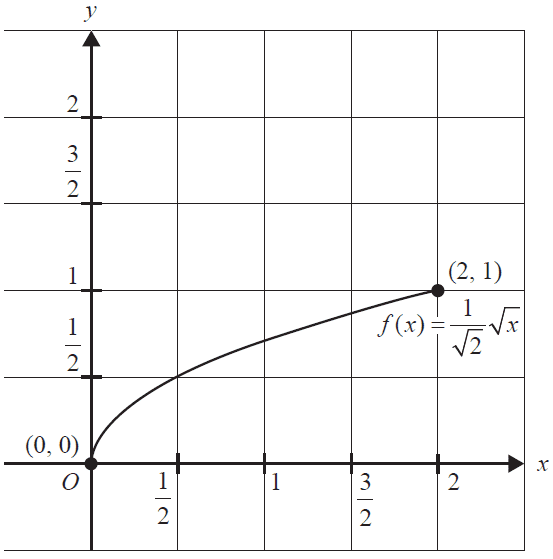
b. On the axes above, sketch the graph of \(f^{-1}\) over its domain. Label the endpoints and point(s) of intersection with the function \(f\), giving their coordinates. 2 marks
End of examination questions
VCE is a registered trademark of the VCAA. The VCAA does not endorse or make any warranties regarding this study resource. Past VCE exams and related content can be accessed directly at www.vcaa.vic.edu.au
